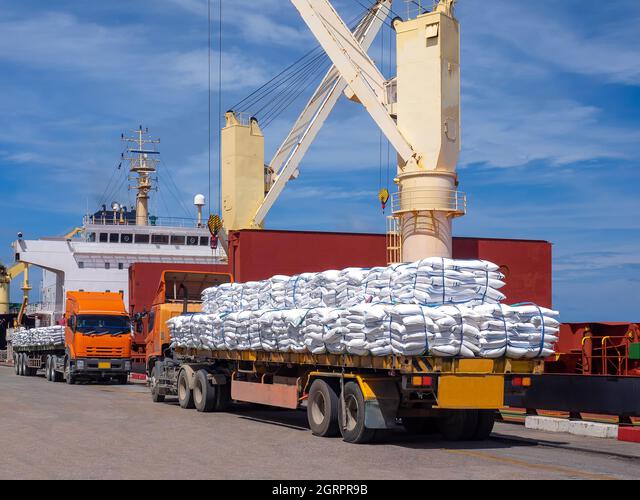The shipment is an important part of any production process of any enterprise. We can prove that food production, construction, and other activities are impossible without moving working tools and sources. Transportation of sugar is one of the most popular requests the transportation companies deal with. This product is delivered to the shops and supermarkets, open-air markets, cafes, and restaurants. Moreover, it is one of the most popular ingredients for canned production.
From the first point of view, it seems that sugar transportation is a simple task. In reality, the transportation of food products is a difficult process. Especially, when you deal with the products without packages. Only experienced specialists can meet all the requirements to provide qualitative delivery of the sugar.
Peculiar features
Such cargo requires attention during transportation. It is important to control the quality of the cistern (if you deliver sugar without a package) or the lorry (if the sugar is in bags). Before the run, the truck is sanitized. Delivery of the bulk sugar costs less than truckload shipping of the packaged product. Also, semi-trailers are often used for this aim.
During the run, specialists should control the next points:
- The absence of dampness in the transportation sections; when the sugar is wet, it loses its taste qualities and marketable condition;
- Leakproofness of sections; because of the small structure sugar can pour easily, so this point is especially important;
- Clean package and truck; bulk cargo can be easily dirty, and it’s rather expensive to clean it.
Speaking about the peculiarities of the cargo, we should mention its transportation characteristics. This term defines the cargo properties, which denote technologies of its transportation, loading, and storage.
The next characteristics must be taken into account:
- the size of goods;
- the weight;
- storage regime;
- physical and chemical properties of the goods;
- specification of package;
- requirements to the package;
- goods properties.
When we speak about the physical and chemical properties of sugar, we should mention that it absorbs the liquid. So it is forbidden to put it near the products with a high level of humidity. As for the storage, this product can be stored in premises where the humidity level is less than 85%. Sugar absorbs smells. So it isn’t allowed to transport the products with a strong odor. The appropriate temperature regime is +32 – +50°F.
There are two main ways of loading and transporting the sugar. They are with and without the package. Dealing with the first type, you should use bags. The key requirement is a leakproof package, which protects from humidity, dust, and other factors. In this way, the sugar will keep its quality, taste qualities, and marketable condition.
When a product is transported without a package, special trucks with trailers are used. These vehicles also guarantee that all the qualities will be kept and the sugar will be delivered in a proper state.

